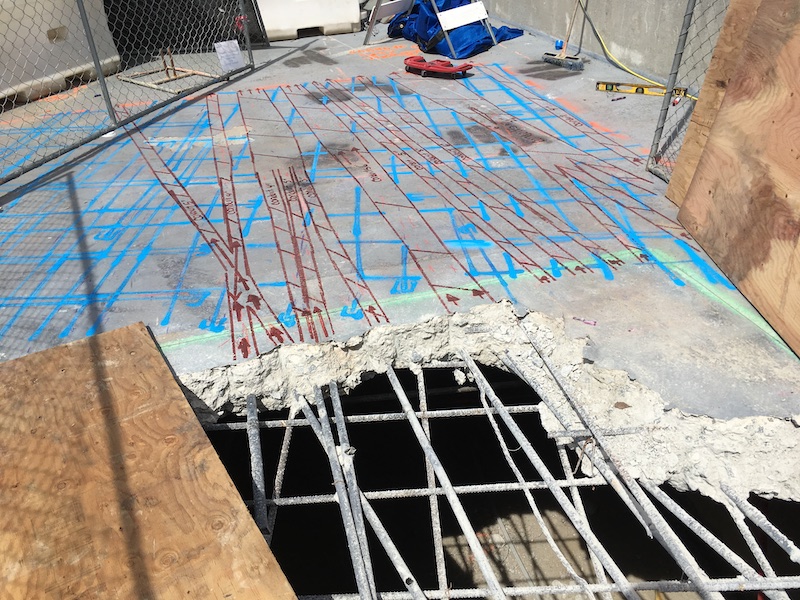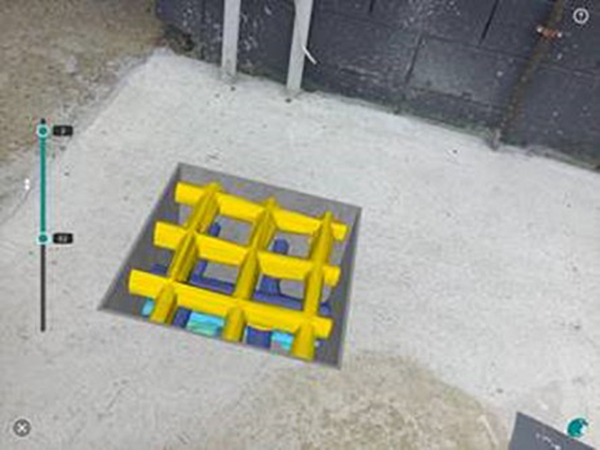The Science of Building: Concrete Scanning and Imaging
Wiki Article
Changing Concrete Evaluation: The Power of GPR Scanning in Construction
GPR scanning is below to transform the means you evaluate concrete. With its advanced innovation, GPR scanning uses countless benefits over conventional approaches. Obtain all set to uncover the power of GPR scanning in construction!
The Basics of GPR Innovation
If you wonder concerning the fundamentals of GPR innovation, you'll be astonished at how it transforms concrete assessment. Ground Passing Through Radar (GPR) is a non-destructive screening technique that makes use of electromagnetic waves to produce photos of subsurface frameworks. It functions by transmitting high-frequency radio waves right into the concrete and measuring the mirrored signals. This enables building and construction experts to see what lies below the surface without needing to break or damage the concrete.GPR modern technology has countless applications in the area of concrete inspection. One of its primary usages is to situate and map the rebar and various other support products within a concrete structure. By doing so, it assists make sure that boring or cutting activities do not harm these important components. GPR can likewise discover voids, fractures, and various other problems in the concrete, enabling prompt repairs and upkeep. Additionally, GPR can determine the visibility of utilities, such as pipes and cords, embedded within the concrete, assisting to prevent unexpected damages during building and construction or remodelling jobs.
With GPR, construction professionals can conserve time and money by preventing unneeded fixings, ensuring safety and security, and improving overall task performance. By revolutionizing concrete assessment, GPR innovation has come to be an important tool in the building sector.
Applications of GPR Scanning in Building And Construction
You can locate a wide variety of applications for GPR scanning in the building market. With its capability to penetrate concrete and other materials, GPR scanning has actually come to be an invaluable device for building professionals. One of the main uses GPR scanning is to situate rebar and various other embedded objects within concrete frameworks. By supplying real-time photos of the subsurface, GPR scanning enables professionals to avoid harmful these important elements throughout fixings or remodellings.Along with situating rebar, GPR scanning can likewise be used to determine voids or tooth cavities within concrete. This is specifically useful for making certain the architectural integrity of a structure or bridge. By finding areas of weakness, construction employees can take the necessary steps to enhance these sections, stopping possible collapses or crashes.

General, GPR scanning has actually transformed the means building specialists come close to concrete evaluation. Its flexibility and precision make it a vital tool for ensuring the security and efficiency of construction jobs.
Advantages of GPR Scanning Over Traditional Methods
The benefits of GPR scanning over standard approaches include its ability to supply real-time photos, find covert things, and properly map below ground utilities. With GPR scanning, you can see what's occurring below the surface in real-time, permitting for prompt decision-making. Unlike typical approaches that need time-consuming and costly excavation, GPR scanning offers instantaneous pictures, conserving you time and cash. This modern technology is especially useful in building and construction projects where time is of the essence.GPR scanning additionally has the exceptional ability to find surprise things. Whether it's hidden pipelines, cables, or rebar within concrete frameworks, GPR scanning can find them properly, reducing see post the danger of damaging these objects during building and construction. This not just makes sure the safety of workers yet likewise protects against potential costly repairs down the line.
Furthermore, GPR scanning is exceptionally efficient in accurately mapping below ground utilities. It gives detailed details regarding the place, depth, and size of hidden utilities, enabling building teams to function with accuracy and stay clear of unintended damages. This level of precision makes sure that tasks stay on routine and within budget plan.
Obstacles and Limitations of GPR Scanning in Concrete Evaluation
To successfully deal with challenges and limitations in concrete assessment, it is essential to comprehend the capacity for false readings in GPR scans. When utilizing Ground Penetrating Radar (GPR) for concrete examination, false analyses can happen as a result of various variables. One usual aspect is the existence of rebar within the concrete. Concrete Scanning and Imaging. GPR scans can sometimes misinterpret the reflections from rebar as splits or voids, causing unreliable results. In addition, GPR scans are delicate to adjustments in material properties, such as moisture material or spaces. This means that variations in wetness degrees or the existence of air pockets can additionally cause incorrect readings. Moreover, GPR scans can be impacted by surface area conditions, such as harsh or irregular surfaces, which can cause signal distortion and false impression. When analyzing GPR scan outcomes and to cross-validate them with various other evaluation methods to make sure precision, it's important to consider these variables. By comprehending the possibility for false readings and taking needed safety measures, you can get over the difficulties and limitations related to GPR scanning in concrete examination, and efficiently utilize its power to reinvent the building sector.Future Trends and Innovations in GPR Checking for Building And Construction
By welcoming brand-new innovations and innovations, you can stay ahead of the curve and benefit from the future fads and advancements in GPR scanning for the building sector. Among the crucial future patterns is the development of advanced GPR systems that offer greater resolution and enhanced accuracy. These systems will certainly allow for more official statement accurate mapping and detection of subsurface functions, making it simpler to determine potential threats and strategy building and construction projects as necessary.
In enhancement, there is recurring r & d in the area of expert system (AI) and equipment knowing (ML) for GPR scanning. These innovations have the possible to automate information evaluation and interpretation, making the scanning process faster and a lot more reliable. AI and ML formulas can pick up from previous scans and enhance their precision gradually, resulting in even more dependable results.
General, the future of GPR scanning in the building and construction sector looks encouraging. By staying on par with the most recent innovations and trends, you can improve your building tasks, lower prices, and ensure the safety and security and durability of your frameworks.
Conclusion
In verdict, you now recognize the cutting edge power of GPR scanning in building. With its advanced modern technology and abilities, GPR scanning has come to be an indispensable tool for concrete inspection. You have actually discovered its numerous applications and benefits over standard methods, in addition to the obstacles and restrictions it might face. As the building industry continues to advance, we can anticipate to see more developments and developments in GPR scanning, making it a crucial part of future building jobs. Accept the power of GPR scanning and transform your concrete inspections.With its capability to penetrate other and concrete materials, GPR scanning has actually ended up being an important tool for construction professionals. Whether it's buried pipes, wires, or rebar within concrete frameworks, GPR scanning can discover them properly, decreasing the threat of harming these things during construction. By recognizing the capacity for false analyses and taking necessary safety anonymous measures, you can get over the obstacles and restrictions connected with GPR scanning in concrete examination, and efficiently use its power to revolutionize the building and construction sector.
By welcoming brand-new innovations and developments, you can remain ahead of the contour and benefit from the future trends and technologies in GPR scanning for the building industry - Concrete Scanning and Imaging. As the building sector continues to progress, we can anticipate to see additional developments and improvements in GPR scanning, making it a vital part of future construction tasks
Report this wiki page